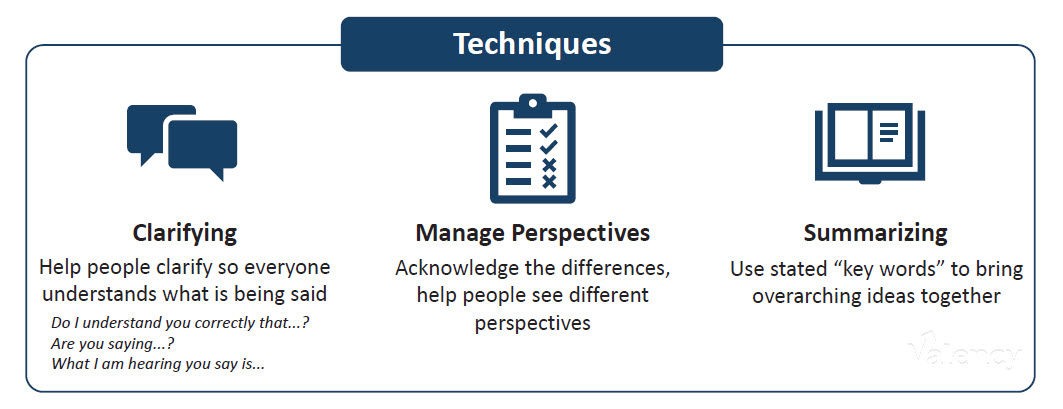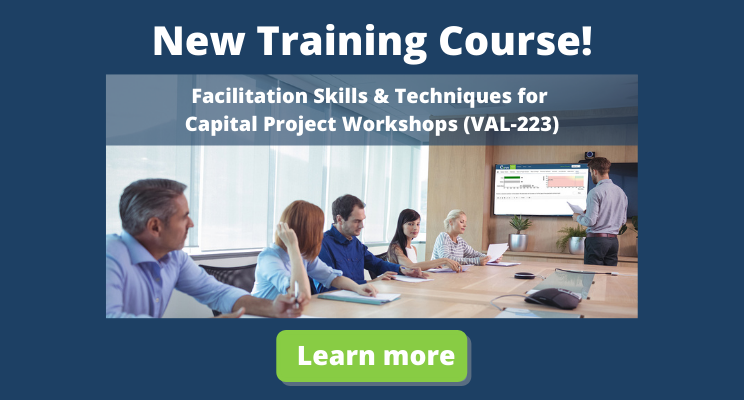A common misconception around strong facilitators is that they were born with the skills necessary to facilitate productive workshops. The ability to guide a group to reach a conclusion is ultimately achieved through the understanding and practice of core facilitation skills and techniques. These skills and techniques can be learned and then applied to the capital project workshops such as those used in Risk Management, PDRI assessments and Construction Readiness Assessments.
“Research and experience have indicated that a trained facilitator is essential to the effective implementation of front end planning tools…The best facilitators have the ability to challenge the team to identify issues related to the major project risks and opportunities.”
– Jim Yuengert, Smithsonian Institution1
A facilitator’s role in a meeting or workshop is to enable the group to reach a conclusion that they would have difficulty reaching on their own. Using various tools and techniques, a facilitator can help manage the groups’ varying perspectives and ideas. Some key techniques for a facilitator include clarifying, managing perspectives and summarizing.

Clarifying
In a meeting or workshop, often people think as they speak, articulating ideas that are not always fully formed. These unformed ideas can be difficult for the group to fully understand. As a facilitator, it is important to ask clarifying questions to ensure the group understands the point or idea that is being conveyed.
A strong facilitator will ask the speaker questions like:
Tell me more…
What would be an examples…?
Are you saying…?
Managing Perspectives
Regardless of the type of meeting or workshop being conducted, a common challenge is the various perspectives and ideas that are brought forth. A facilitator must work to manage the perspectives of those in the group. When they notice the conversation going in various directions, it is important that the facilitator acknowledging the different perspectives or issues that have been brought forth by the group. Start by giving the team a moment to pause, allowing them to identify the different perspectives that have been raised. Depending on how the meeting is being conducted (virtually, in-person or hybrid) this is an ideal opportunity to use a visible list to write these ideas. This will encourage the team to work through the varying perspectives, which will engage group members, encouraging questions which will improve mutual understanding.
Summarizing
During a workshop or meeting, the time will come when the facilitator needs to help the group get back on track, bring multiple relevant ideas together, or to bring the discussion to a close. A strong facilitator ensures that they are helping the group consolidate their thinking by using the principles of summarization. By restating the key themes or recapping the main points that have been made throughout the session, a facilitator is ensuring continued consensus and agreement of the group. Any good summary will conclude with a question that gracefully helps transition. An example of a good transition is: “Is there anything else we should capture before we move on to the next topic on the agenda?“
When the proper techniques are applied, the facilitator can maintain participant engagement and encourage a positive group dynamic, ultimately resulting in stronger group consensus.
Valency has introduced a training course designed specifically for capital project leaders: Facilitation Skills & Techniques for Capital Project Workshops. This interactive facilitator training course can help build your facilitation skills and your organization’s internal capacity to support critical workshops throughout the Capital Project Lifecycle.
1SP268-3 – Adding Value through Front End Planning, Construction Industry Institute, 2012

